Science & Skepticism, Surf CoachingFlying High
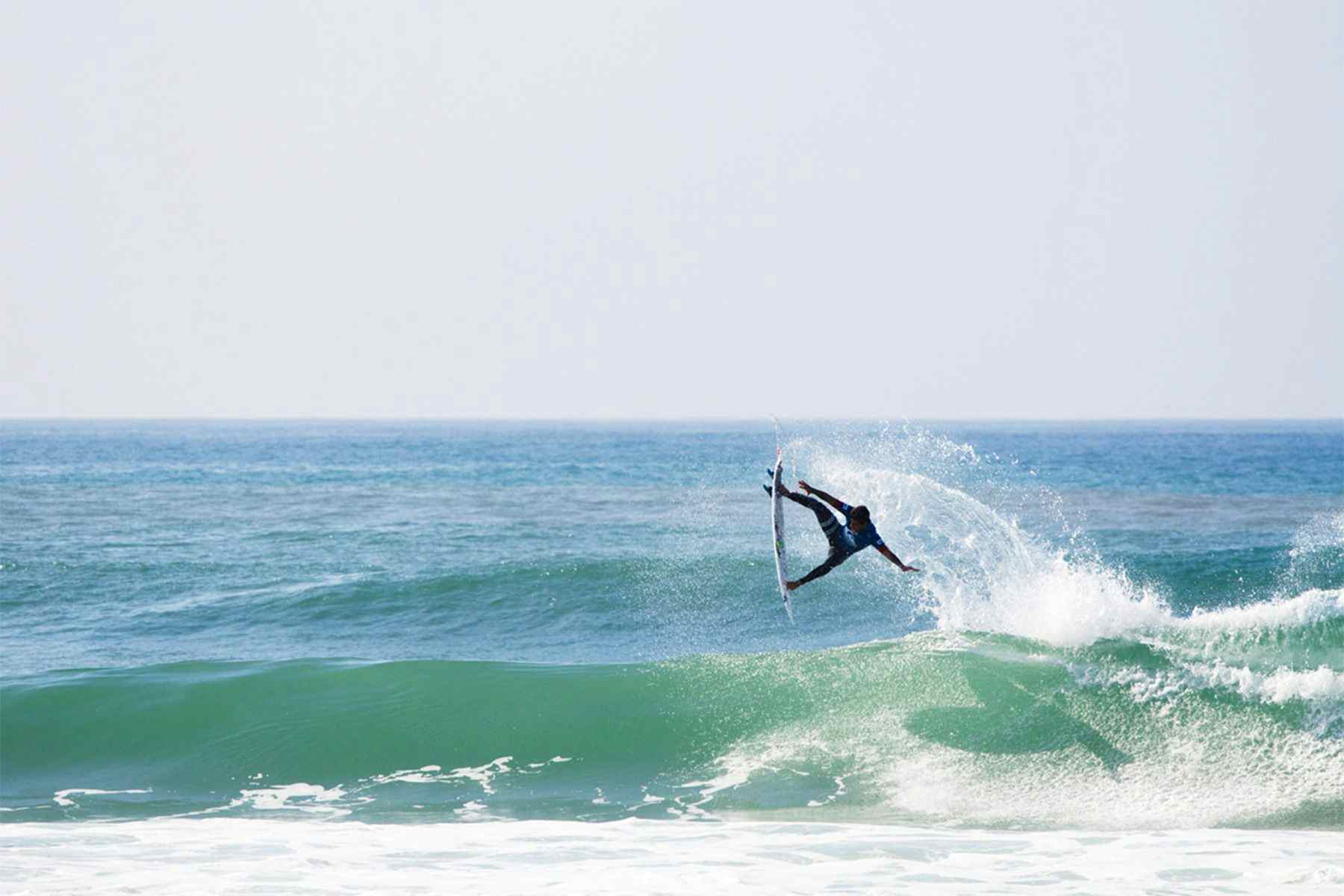
A Systematic Evaluation of Aerial Landings
Aerials. It is safe to say that they sit amongst surfing’s most mouth-watering manoeuvres, right up there with barrels and laybacks. Technically, though, they are arguably the most challenging to pull off, and, to a large extent, the most hazardous, too. Indeed, few are those who can launch an air – fewer still that can land them. But even the ones who do so on a regular basis probably have little knowledge of what’s at play – and at stake – when doing an air; a lot of it is instinctive.
Dr James Forsyth, a lecturer at the Biomechanics Research Laboratory at University of Wollongong, Australia, is someone who has sought to unveil some of the structural mysteries behind this supreme move. In his latest paper, published this January in the British Journal of Sports Medicine, he summarises the findings of an eight-year research study into what it takes to land an aerial manoeuvre,in the hope that not only will more and better airs be landed, but that they are also done with the lowest risk for the surfers.
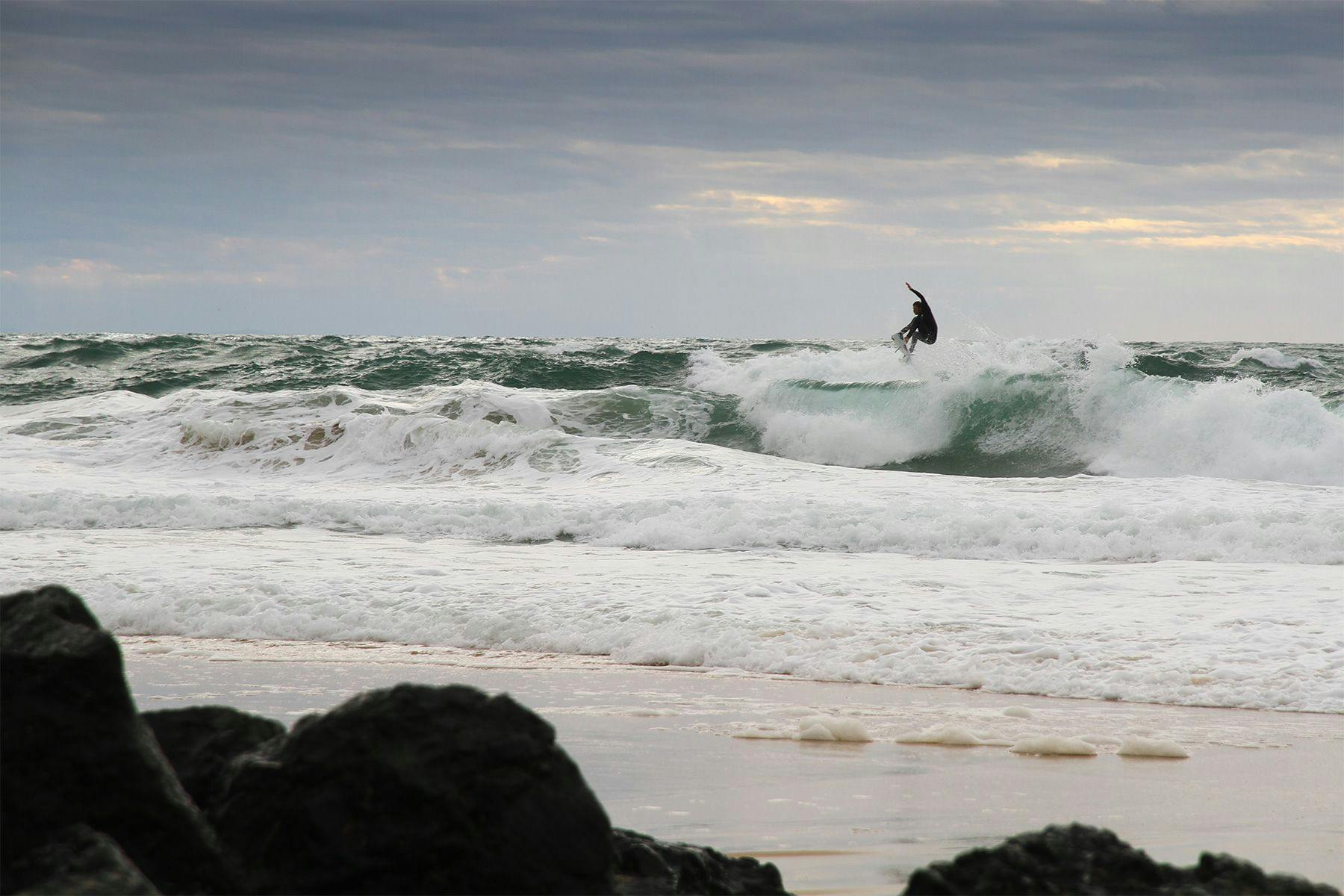
Surf Simply caught up with Dr Forsyth to hear his insights on this manoeuvre that, let’s face it, we are all secretly striving for.
Image
This last paper is the result of a broader research study that started back in 2015 and encompasses six distinct studies that form your PhD thesis. From this, I have two questions. First: Thinking back on the entire process, what would you say were the most important and/or surprising pieces of information you came across?
This is a great question! One of the really interesting, and I think important parts of my thesis, was that we were able to characterise the forces that surfers experience when landing. While the research was completed in a laboratory setting using simulated aerial tasks, this is the closest we have come to understanding the magnitude of forces that surfers experience in this particular task and the rate at which these forces are generated when landing. Critically, if surfers are unable to dissipate the forces they experience in a way that reduces the rate that they are generated, then there is a risk that performing the manoeuvre could result in an injury. Something that was slightly unexpected, was that when surfers performed the simulated frontside air – the arguably simpler task compared to the simulated frontside air reverse – they experienced greater rates of force generation, suggesting that the muscles of the lower body may have to work harder to attenuate the impact of landing.
Second:A lot has changed in surfing – and aerial technique – since you began this project. How did your research change throughout the years? And from the perspective of a surf researcher, what lessons have you learned and what would you do differently?
My journey on this research topic really began nearly 10 years ago, in my undergraduate Honours project in 2014. At that time, professional surfing was going through its own change and growth with the Association of Surfing Professionals on its way to becoming the World Surf League, and the sport generally becoming more professional in the way that surfers approached and received support for competition. Aerials were a staple manoeuvre of the male professional surfer’s repertoire, but their variations were less of a consideration. By the time that I had begun my PhD, it became clear that we couldn’t just look at a frontside air as the only aerial variation as the frontside air reverse was being performed much more in competition.
Something that I took note of as my studies progressed, was the training modalities that surfers were being exposed to. When I first started my PhD, the predominant form of dryland aerial training was focussed on using simple gymnastics skills in the same way that our simulated task was developed. As the years progressed, however, more complex gymnastics skills and utilising skateboards as another modality became present in dryland preparation. If we had the time and the opportunity to investigate how closely these other dryland skills represented aerials, I think it could have added some more support to their use within preparation for aerial surfing.
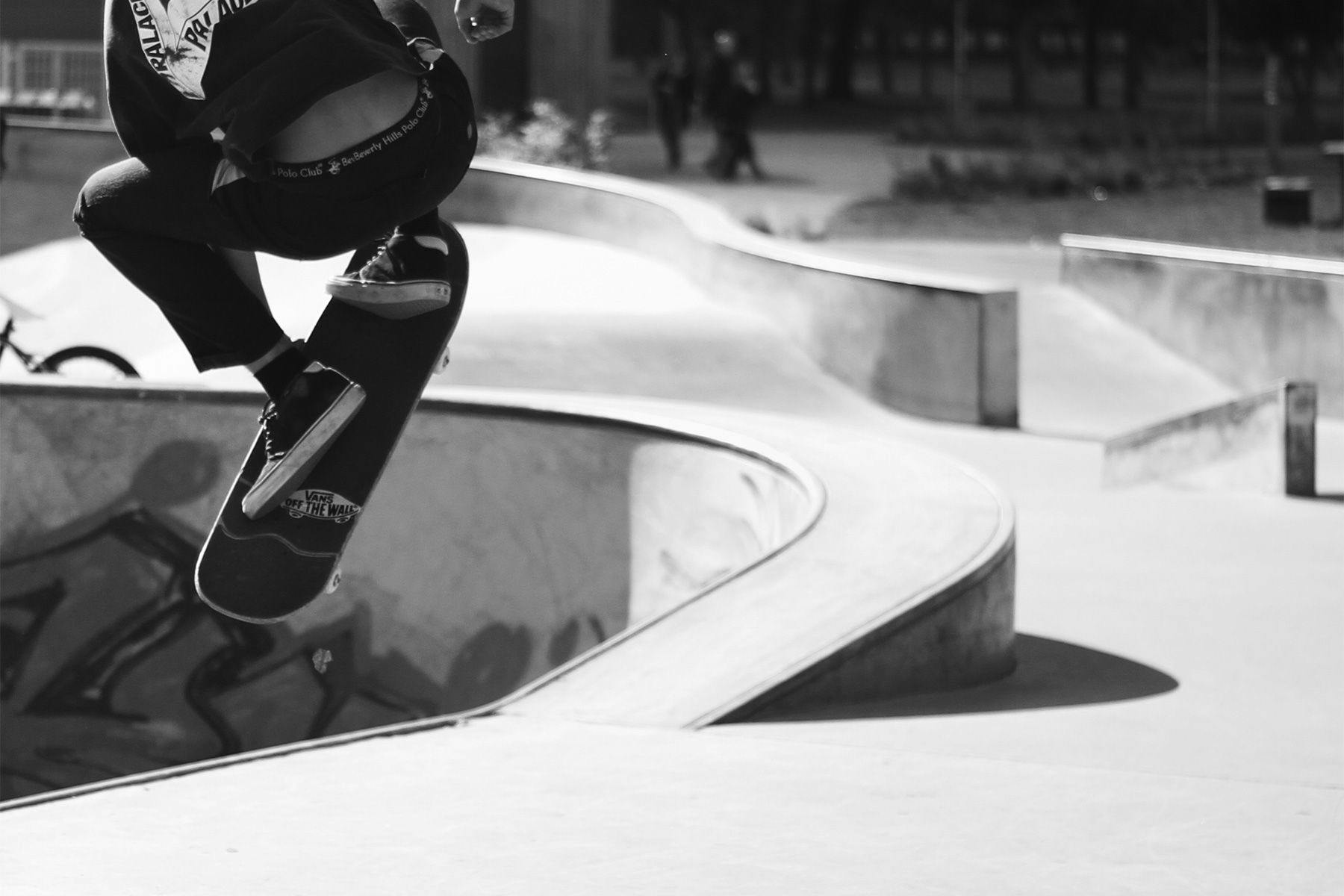
Straightaway in study 1 you found out that there was a lack of research investigating wave-riding skills in general. In your view, what have been some of the main factors to contribute to this shortage of data?
The predominant challenge with understanding wave-riding skills in surfing is that the ocean is really harsh on technology – this means we can’t easily put sensors or devices on surfers to understand what they are doing in the water. The exception to this is obviously the use of Global Positioning Systems (GPS) devices like the Trace sensor, Rip Curl watches or more recently the Dawn Patrol app for the Apple Watch. These devices have a few limitations, such as the sensitivity of the GPS signals they record and how much data they capture and store. This is likely the reason why surfers place value in high-quality, qualitative feedback from a coach.
Taking what you gathered in studies 1 and 2, you went on to investigate “the technical elements present in aerial landings performed by elite male surfers to determine the critical features (CFs) associated with successful performance,” which then formed the basis for the model of aerial performance in study 3. Could you please talk a bit more about these CFs and the role they play – or could potentially play – in the refinement of the aerial?
When evaluating the performance of both the frontside air and frontside air reverse in elite men’s competition, there were a few critical features which stood out as significantly related to successful performance. That is, these critical features were seen more frequently in successful aerial attempts than those that were unsuccessful. In particular, landing with the lead ankle in dorsiflexion [the backward bending and contracting of the foot so the toes are brought towards the shin] and landing with the centre of mass positioned over the centre of the surfboard were associated with success in both the frontside air and frontside air reverse. By knowing these critical features, coaches and athletes can look to incorporate these into their review or feedback of aerial manoeuvre performance. In future, it would be great to see these critical features used to help inform coaching interventions to improve aerial manoeuvre success rates.
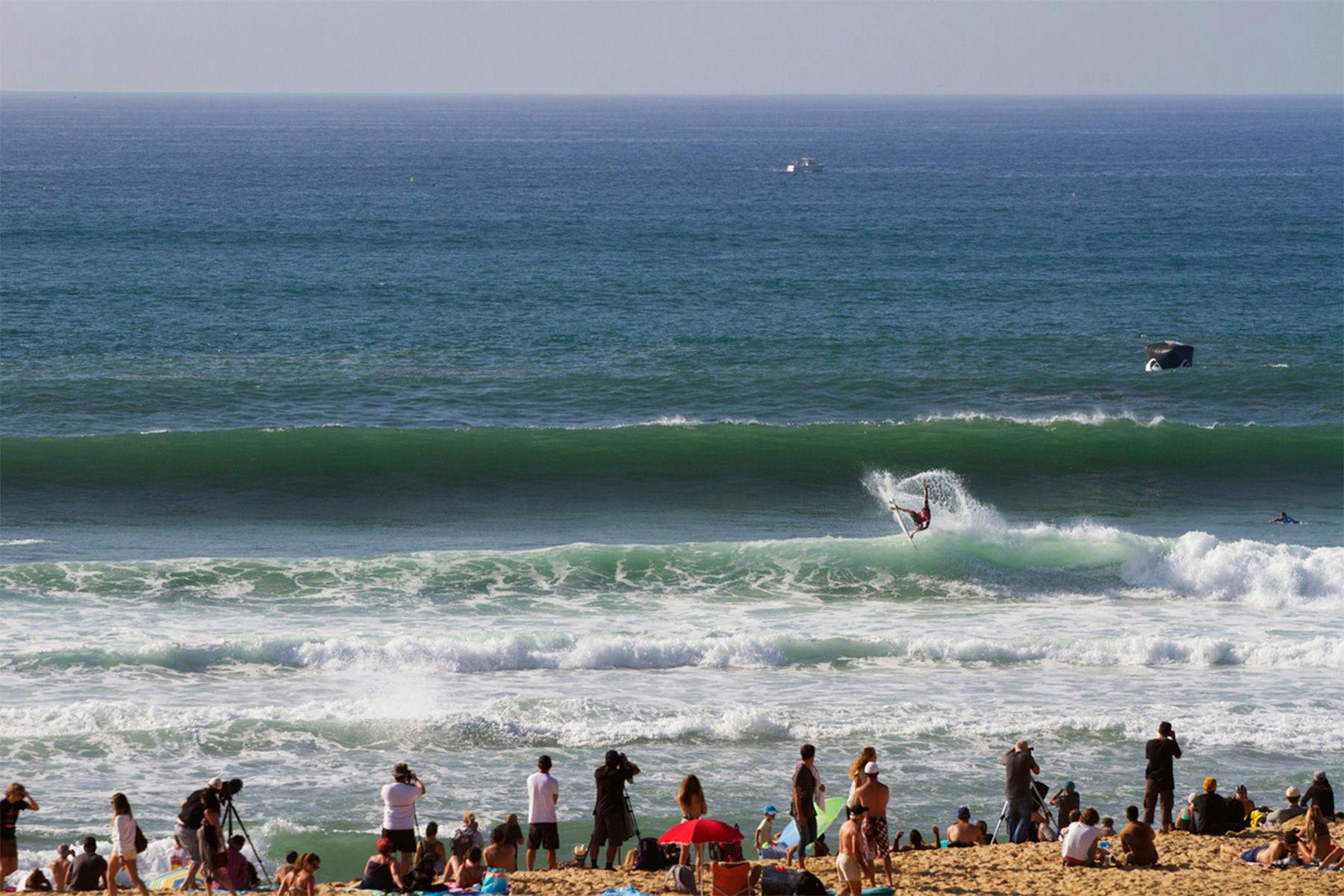
In study 3, you conducted a qualitative analysis of 121 aerials performed in the finals from the 2015 Men’s Championship Tour. If possible, I’m interested to hear more about the backstage of that particular study. What was it like to scrutinise aerials, how did you go about it, what were you looking for, what were the main challenges, etc?
To analyse all these aerials, first I developed a series of 52 possible technical features in collaboration with expert biomechanics and sports science researchers. Following this, each aerial identified from the finals (quarters, semi’s and final heats) in each event in the 2015 Men’s Championship Tour was evaluated to determine whether the technical features occurred. The video data we used to complete this analysis was the video recorded and broadcast in the World Surf League events, so this presented a few challenges. Firstly, because the video was produced for broadcast there were often missing views which meant that I could not accurately determine whether one of the technical features occurred or not. However, only 8.5% of the possible observations were lost to limitations in the camera positioning. An additional challenge was that video camera positions were determined to optimise the view of the surfers in the competition area, not to provide the best or most consistent shot of the surfer as they travelled across the wave. This meant that I had to be very conservative in my annotations of various body positions as the surfers performed their aerials. With that said, the results of this study provided a model of performance that we could then use to validate a laboratory-based representation of aerial landings in later studies.
You write that “technical models, based on the CFs present in aerials performed in the ocean, were compared in study 4 to simulated aerial landings, confirming that the simulated aerial task was valid to investigate how surfers land aerials.” I suppose this finding opens up a lot of possibilities for future research on aerials and surf manoeuvres in general. How do you plan to use it – or how do you hope it’ll be used?
This was a great finding in support of the application of a simulated aerial task to evaluate landing performance in surfing. With this, it means that we, or any other surf researchers interested in understanding aerial manoeuvre performance, can now use this highly-controlled task to answer additional questions. In my mind, I think that the task could be used to understand if a dryland intervention could improve aerial landing skills, or something along those lines. With that said, I think that we are getting closer and closer to being able to measure performance in the water with the increasing access to wave pool technology; we just need to be able to put sensors in the water next!
To touch on the CFs one more time… Generally speaking, what are some of the main features surfers should think about when performing an air? And assuming it’s possible to zero in on these features during training, do you see a sort of CF-centred training method being developed?
As mentioned earlier, there were two critical features which appeared in both the frontside air and the frontside air reverse – (i) landing with the lead ankle in a dorsiflexed position and (ii) landing with the centre of mass over the centre of the surfboard. While the latter is something that you would innately expect to occur, the former is something that I certainly believe would be useful to aid in providing feedback to athletes in a coaching session. Other critical features such as landing with the feet wider than hip-width apart (in the frontside air) or landing with the chest over the lead knee (in the frontside air reverse) are also very coach friendly and simple to pull out of video footage when reviewing a session that focused on aerial manoeuvres.

In study 5, you conducted a biomechanical analysis of two aerial variations, the Frontside Air and the Frontside Air Reverse. I’m curious: from a biomechanical perspective, what would you say is special about aerials when compared to other highly technical and aggressive manoeuvres such as a layback, for instance?
In my opinion, there are probably two biomechanical considerations that are unique to the aerial: (i) landing from an aerial is going to be highly variable based on the height, the landing zone and the aerial variation; (ii) much of the execution of the aerial is done before the surfer leaves the wave’s face. These two points mean that the surfer not only has to have experienced a wide range of aerial landings (so that they know what they will experience when they land and can therefore prepare for it), but they also have to have truly refined the approach and take-off phases to ensure that they arrive at the landing phase of the aerial in a position that allows them to be successful. All in all, these are incredibly complex manoeuvres that surfers can now make look quite simple in execution – a credit to the level of surfing we get to experience now in free surfing and competition.
Study 5 also highlights that whilst “no significant differences in muscle activation strategies of the lower limb were found between Frontside Air and Frontside Air Reverse, there were significant differences in the way that the surfers attenuated the forces of landing, with FA producing greater rates of loading than the FAR.” I was wondering if you could comment on these different rates of loading, how you expect it to differ between Frontside Airs and other types of airs, and how much it determines the risk of injury.
This is another excellent question! As outlined in some of the earlier questions, one of the key findings from my PhD was related to the forces generated when landing the two aerial variations that we examined. The rate of loading is a function of the force generated over the time of the landing event, which in biomechanics we tend to report at the peak force generated divided by the time that it took to reach this force. When evaluating the frontside air and frontside air reverse we found that the rate of loading was significantly greater in the frontside air, mostly due to the fact that surfers were reaching the peak forces generated in this task earlier than they were in the frontside air reverse. Logically, this can be ascribed to the landing sequence that surfers go through when performing an air reverse over a straight air – often in the air reverse the nose of the board makes first contact with the wave and, due to the shape of the breaking wave, this allows the surfer to “roll” through the landing event, striking one foot after the other as the board makes contact with the wave from nose to tail. Another hypothesis is that in the straight air, the surfer wants to remain as close to the surfboard as possible so that they do not push the board away from the feet, and by doing so they do not have much available range of motion in the lower body to extend the time that they have to dissipate the forces generated at landing, resulting in higher rates of loading.
Thinking about different aerial variations to those that we investigated, I think that the primary thing that is going to differentiate what the rate of loading is likely to be, is going to be the positions that surfers put themselves in when landing. For example, if the surfer is landing with the board flat or parallel to the landing zone, then they are likely to generate greater rates of loading than if they were to land tail- or nose-first (like we typically see with the aerials with rotation). Although it is near impossible to know what the injury risk is for these manoeuvres (simply because we have very limited data on what happens when surfers are injured following an aerial), you could estimate that the aerials where surfers either land in a more compressed position or in a landing zone that is likely to generate more force when landing (such as the flats), they may be more likely to overload a joint or muscle, resulting in an injury.
Branching off from the above question… That different rates of loading were found between aerials means that different aerials present different risks and, as such, should be scored differently – which is probably already done by judges, but perhaps too subjectively. With that in mind, how do you see studies like yours being introduced into surfing’s scoring system in the future?
I think that the judges do a great job of incorporating the relative risk of performing different aerial variations – both in terms of injury risk and risk of an incomplete attempt (in a highly technical variation) – into the scores they award in competition. Given that risk, which is probably best aligned with “commitment and degree of difficulty”, can realistically only account for 1/5th of the scoring criteria, I think it would be expecting too much of the judges to include objective information in that way. I do think, however, that these findings might help contribute to their understanding of what was a more difficult aerial attempt in competition by knowing what it would take for the surfer to attenuate the forces generated at landing. Hopefully they might be aware of some of these findings and take that into consideration!
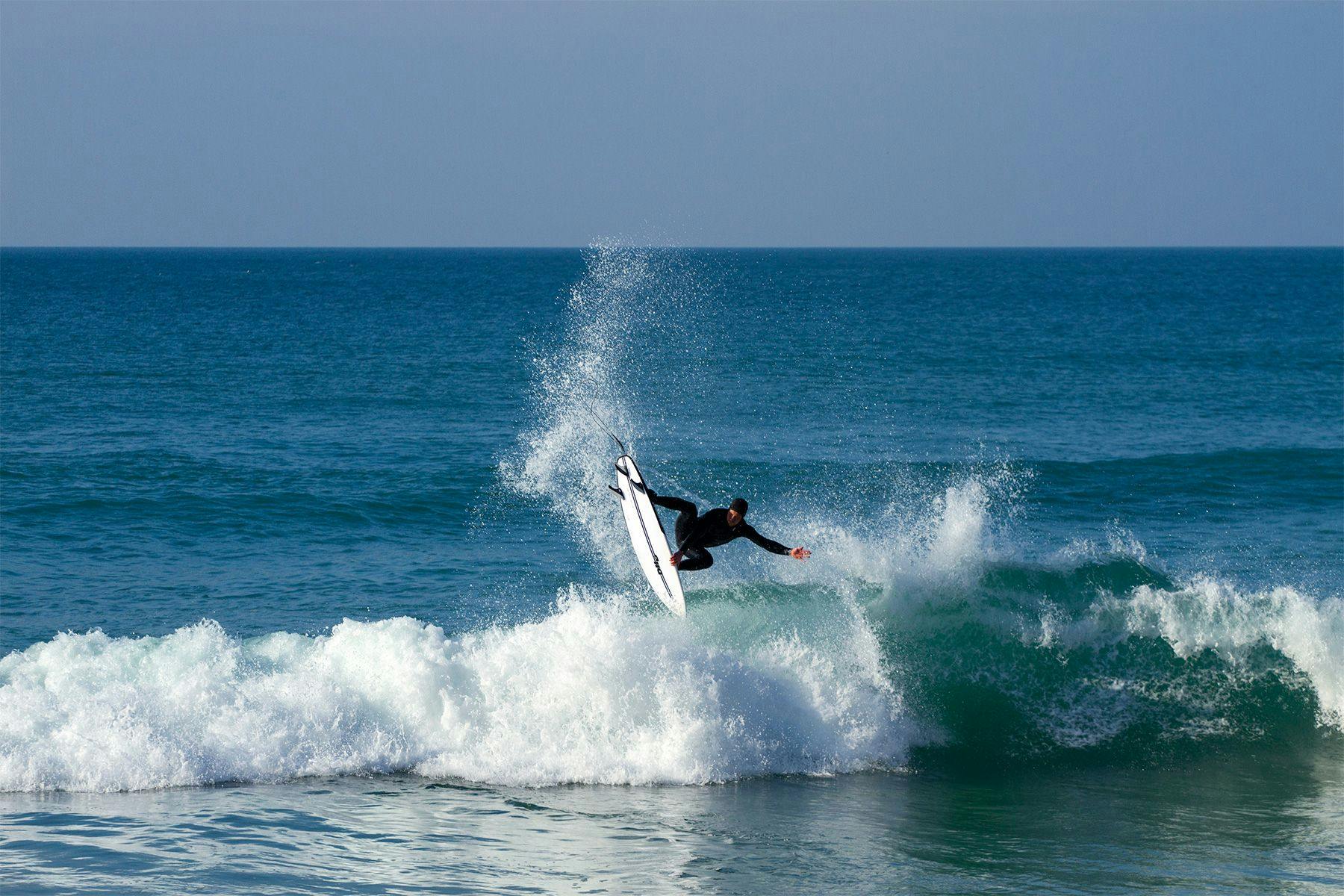
As you mentioned, your thesis highlighted the CFs required for successful aerial performance, as well as the importance of adequate lead ankle dorsiflexion capacity in minimising forces generated when landing aerials. I was wondering if you could elaborate on lead ankle dorsiflexion and how exactly it plays a role in aerial landing.
This is an outcome variable that it was really awesome to see appear consistently in the findings of my thesis. Here, lead ankle dorsiflexion describes the range of motion or the position of the lead ankle in the surfing stance. When describing the critical feature of “landing with the lead ankle in dorsiflexion”, this meant that during landing we observed the surfer’s ankle joint in a position where the foot had flexed closer towards the shin, at the point of initial board-wave contact. Similarly, when relating the forces generated at landing in the simulated aerial tasks, we found that those surfers who had greater dorsiflexion range of motion, i.e. could flex the shin closer to the foot when weight-bearing, experienced lower rates of loading.
There are two critical roles that ankle dorsiflexion plays in the execution of aerials. Firstly, while in the air the surfer needs to remain as close to the board as possible to make sure that they do not push the board away and lose it, as well to minimise rotational inertia (when performing airs with a rotation) and make the rotation faster. Another component of this is that dorsiflexion of the ankle in the air promotes tibial translation, and therefore translation of the centre of mass, over the centre of the surfboard which ensures the surfer is appropriately positioned over the surfboard when landing. The second role of ankle dorsiflexion is that by having sufficient range of motion capacity, surfers are able to extend the time that they have to dissipate the forces generated when landing, which generally will result in lower peak forces and rates of loading.
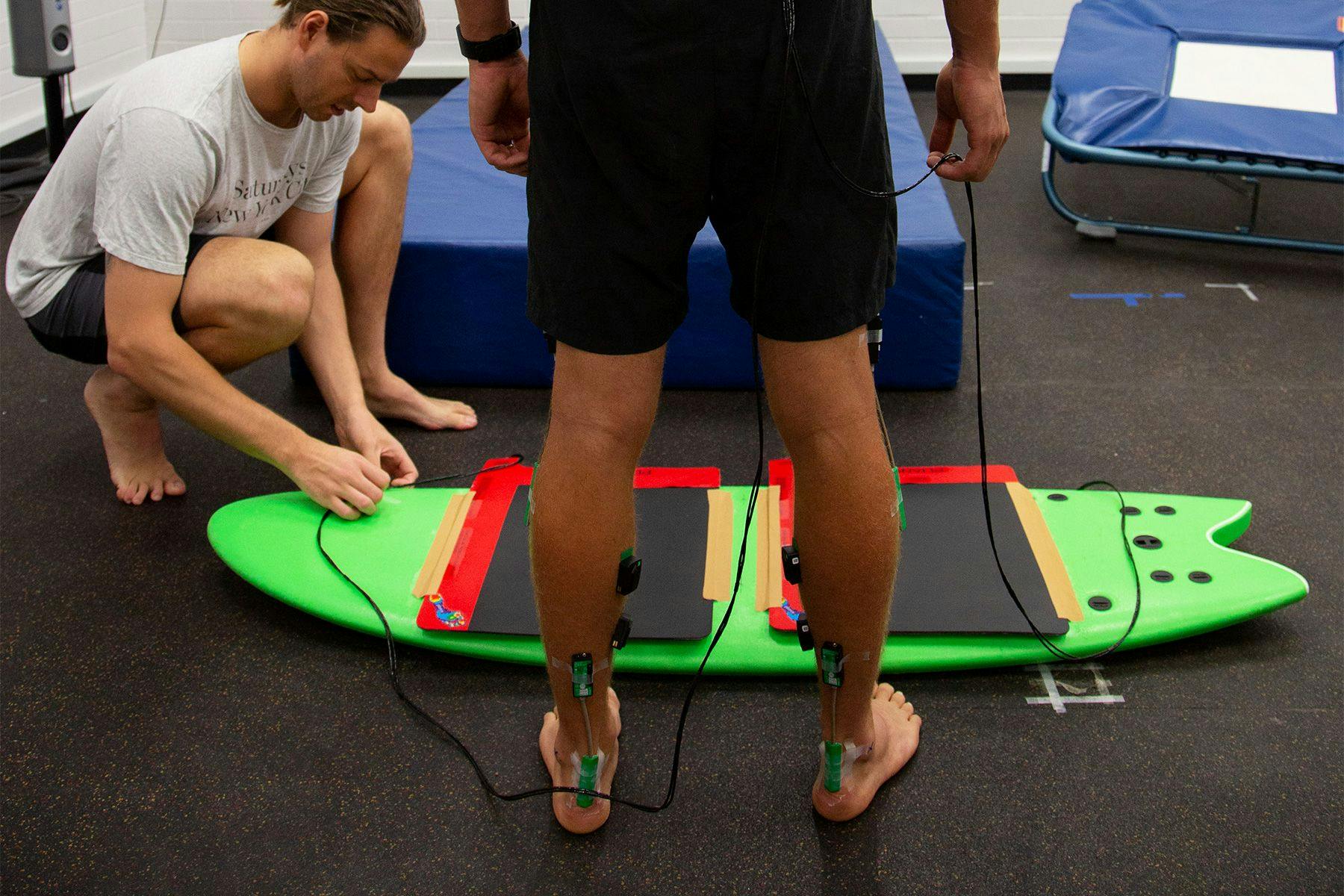
Technology is becoming a veritable game-changer in surfing performance and training. When thinking of aerials, are there any new technologies and/or approaches that surfers can tap into to up their air game?
I think that the obvious answer to this is the increasing opportunities for practice in a wave pool. With many now open to the public around the world and the rate at which these are being developed, I think that wave pools provide a perfect solution to developing and refining aerial skills. There are definitely some limitations in terms of cost per use and the general feeling of the water in a wave pool (the energy in a wave pool isn’t quite like the ocean), but simply put, the ability to practise the skill almost in isolation and at a high volume is only going to elevate performance.
How do you see aerial techniques developing in the future?
Adding to the response of the previous question, I think that given there are going to be opportunities for surfers to really get repetitions in at high volumes, aerial performance could progress rapidly over the coming years. A lot of surfers are already trying to get more rotations in, get more inverted in their rotations, and try more challenging grabs. It may well be that in a few years’ time there will be surfers doing 540 degree rotations as commonly as they do full rotation airs now.

Similarly, how do you see the place of aerials in competition developing in the future?
Because the judges will reward “progression and innovation” and “commitment and degree of difficulty”, surfers are always going to push the limit of what aerials can be performed in competition. With that said, I think that the “impact” that aerials have on the scores awarded has diminished somewhat, in that the variations which are performed frequently (e.g. air reverses), aren’t rewarded so highly by the judges as they don’t think that they are as difficult any more. I think that in women’s surfing, however, the ability to perform aerials is going to become a critical skill in the years to come. With the newer generation of female athletes coming on tour and already being highly capable of performing aerials, they will definitely perform more and will be rewarded by the judges.
In conclusion, you write: “Given the importance of aerials to competitive surfing performance, it is imperative for coaches and performance support staff to understand technique features that are likely to improve a surfer’s performance while reducing the forces experienced when performing this complex skill.” In your opinion, what are some ways of putting this knowledge to practice?
Great question to finish with, thank you! I think there are a few different things that surfers can do to put this into practice:
i)The critical features we found for the frontside air and frontside air reverse are simple coaching cues that could easily be used for feedback on aerial performance. Future research will hopefully be able to use these critical features as an intervention to improve aerial success rates.
ii)Using a simulated aerial task to improve landing skills is also a fairly accessible approach to improving aerial performance. As mentioned earlier, the ability to get repetitions in and practise the skill will likely lead to improved performance outcomes. These tasks only require a trampoline, a crash mat and a soft top surfboard so are not cost-prohibitive or hard to access.
iii)Increased dorsiflexion in the ankles was associated with lower rates of loading and as such are a simple way to reduce some of the potential risks of performing aerials. Incorporating static and dynamic calf stretches require very limited time and no skill or equipment, so this should be a no-brainer!
*****
The author and Surf Simply Magazine would like to thank Dr James Forsyth for his time and assistance, and for permission to reproduce photos from his studies.